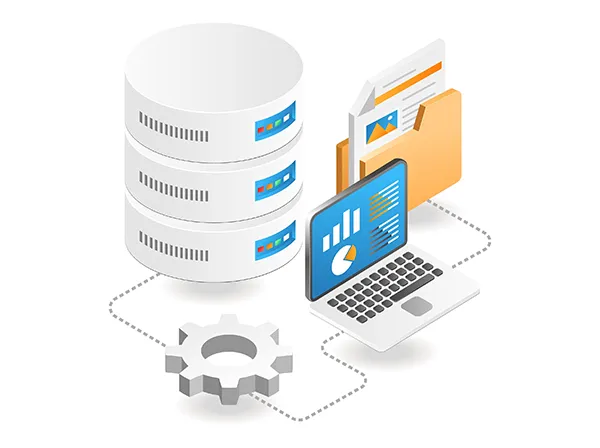Understanding Databases: The Backbone of Modern Applications
 Gift Ayodele
Gift Ayodele
In our increasingly digital world, databases play a crucial role in everything from social media platforms to online shopping websites. But what exactly is a database, and how does it work?
What is a Database?
A database is essentially an organized collection of data. Think of it as a highly structured, digital filing system that stores, organizes, and manages information. This information can be anything from customer data in a business to the posts you see on your favorite social media platform.
When you use an app like Instagram or a service like Amazon, you’re interacting with a database. The posts you like, the products you buy, or the movies you add to your watchlist are all stored in databases behind the scenes.
Key Components of a Database
Tables: Databases often store data in tables. Think of these like spreadsheets where data is arranged in rows and columns. Each row is a record (e.g., a customer or a product), and each column is a field (e.g., name or price).
Fields: A field is a single piece of information within a table. For example, in a table storing customer information, the fields might be "Name," "Email," and "Phone Number."
Records: A record is one complete set of fields, representing one entry in the table. For example, a single customer with their name, email, and phone number would be a record.
Primary Key: This is a unique identifier for each record in a table. It’s like a social security number for each record, ensuring no two entries are identical.
Types of Databases
Relational Databases (SQL):
The most common type, relational databases store data in tables and use Structured Query Language (SQL) to manage and query the data. Popular systems include MySQL, PostgreSQL, and Microsoft SQL Server.
Use case: Online stores where products, customers, and orders are interrelated.
Learn more: w3schools SQL Tutorial
NoSQL Databases:
These databases are more flexible and can handle large volumes of unstructured or semi-structured data. Examples include MongoDB and Cassandra.
Use case: Social media platforms that handle different types of data like text, images, and videos.
Learn more: MongoDB Official Documentation
Cloud Databases:
As the name suggests, these are databases that run in the cloud. Popular services include Amazon RDS, Google Cloud SQL, and Microsoft Azure SQL.
Use case: Applications that need to scale quickly and need high availability.
Graph Databases:
Designed for storing and querying relationships between data. Neo4j is a well-known graph database.
Use case: Social networks where connections between users are key to the system’s performance.
Why Databases Are Important
Organization and Efficiency: Databases allow businesses to keep their data structured, making it easy to retrieve and use. Whether you're pulling up a customer's purchase history or analyzing trends, databases make it efficient.
Scalability: As businesses grow, so does their data. Databases are built to handle increasing amounts of data, ensuring that they can scale as needed.
Data Integrity: By using databases, organizations ensure that their data remains accurate, consistent, and free from duplication. Features like primary keys help maintain this integrity.
Security: Databases offer various layers of protection, from encryption to user access controls, ensuring that sensitive data remains safe.
How Databases Work: A Simple Example
Let’s say you’re shopping online. When you search for a product, the database retrieves all the relevant items from a "Products" table. If you add something to your cart, the database updates a record in the "Cart" table to include your selection. Once you make a purchase, the system updates the "Orders" table with details of your transaction.
All this happens in seconds, thanks to the efficiency and structure of databases!
Useful Links to Learn More About Databases
Here are some excellent resources to explore and learn about databases in more detail:
W3Schools SQL Tutorial A beginner-friendly guide to SQL and relational databases.
MongoDB Documentation
If you want to dive into NoSQL databases, MongoDB’s documentation is a great resource.PostgreSQL Tutorial
Learn more about PostgreSQL, a powerful open-source relational database.MySQL Documentation
A comprehensive guide to MySQL, one of the most widely used databases.Neo4j Graph Database
Explore the world of graph databases with Neo4j, perfect for understanding relationships in data.
Subscribe to my newsletter
Read articles from Gift Ayodele directly inside your inbox. Subscribe to the newsletter, and don't miss out.
Written by
